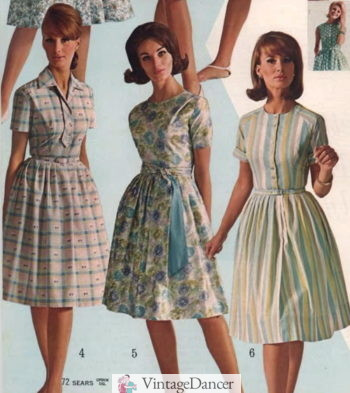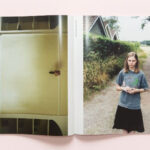The 1960s was a decade defined by profound social upheaval, technological advancements, a revolutionary music scene, widespread conspiracy theories, and the powerful Civil Rights movement. These forces converged to create a decade of significant change, and the ripples are still felt today. However, the iconic “Sixties” image didn’t fully materialize until the middle of the decade.
Following almost two decades of post-war prosperity, the assassination of President John F. Kennedy in 1963 and the escalating Vietnam War fostered a sense of unease among Americans. National perspectives shifted towards vulnerability, a loss of innocence, and growing distrust in institutions. This climate fueled protests, skepticism, and political activism, particularly among the younger generation. Embracing a powerful sense of self-expression, these students evolved into the counterculture icons of the 1960s: the hippies. Their unconventional fashion – anti-fashion silhouettes, “Flower Power” prints, psychedelic colors, peace symbols, long hair, and flared pants – became radical statements that swept across America in the mid-1960s, eventually becoming mainstream by the mid-1970s.
This rapid transformation begs the question: how did such a dramatic shift occur so quickly? Surprisingly, fashion played a pivotal role. This article will briefly trace the history of the 1960s hippie movement and then delve into the evolution and impact of 1960s hippie fashion.
Who Were the 1960s Hippies?
Ask a businessman in the late 1960s about hippies, and you likely wouldn’t receive a flattering description. Hippies were often stereotyped as unkempt, drug-addled college dropouts, disconnected from the realities of the “real world.” Their penchant for disrupting societal norms clashed with a nation still clinging to the idealized suburban image of the 1950s. While their style and philosophies gained popularity in the late 60s, the “hippie” label often carried negative connotations. The media and the public frequently associated hippies with drug abuse, the corruption of youth, political extremism, conspiracy theories, and even the infamous cult leader Charles Manson in later years.
However, the reality was more nuanced. The hippies of the 1960s were primarily free-spirited, white, upper-middle-class students from progressive universities, notably Berkeley and San Francisco State University. They drew inspiration from the Beat Generation of the 1950s, embracing its anti-establishment, anti-materialistic, and pro-free expression ethos. Hippies championed the use of psychedelic substances, pioneered experimental music as a form of self-expression, and cultivated a positive outlook on life’s richness, experiences, and harmony. Their hedonistic and present-moment values were encapsulated in their popular mantra: “if you like it, do it.”
Looking back, hippies are largely remembered as advocates for peace. Their political inclinations are credited with shaping the “New Left” and modern environmentalism. We can also thank them for popularizing organic foods, tie-dye, yoga, light-wash jeans, bohemian fashion, and the pervasive “live and let live” philosophy. Even decades later, the 1960s hippies retain enough social influence and appeal to inspire neo-hippie communities both offline and online, and within contemporary fashion.
The History of the 60s Hippie Movement
In 1964, author Ken Kesey and his group, the Merry Pranksters, embarked on a psychedelic, acid-fueled road trip from California to New York in a brightly painted school bus. The term “Hippie” first appeared in print in 1965, referring to the “hipster” community in San Francisco’s Haight-Ashbury district. By 1967, a multitude of names, both complimentary and derogatory, were used to describe this emerging youth group – hippy, drug freak, dropout, flower child, Vietnik, Yippie, treehugger, and many more. Internal divisions were also prevalent within the movement.
Initially, there was little that truly unified 1960s hippies as a cohesive subculture, let alone a political force. While their perspectives were generally progressive, they weren’t always explicitly political. Instead, they often centered around sexual liberation, drug experimentation, and the importance of “expanding horizons” and “breaking free.” The divide between politically active hippies and those who were politically disengaged led to both protests and “why bother?” anti-protests being associated with the hippie label. This internal conflict, along with constant disagreements, contributed to the overall disorganization of the hippie movement.
The foundation of a more unified hippie identity and their recognition as a significant 1960s counterculture emerged with the Human Be-In of 1967. Students from various campus groups united, finding common ground in their opposition to the Vietnam War, government authority, and mainstream middle-class values. Furthermore, they advocated for artistic expression, experimental drug use, spiritual transcendence, harmony with nature, and communal brotherhood. While some early hippies rejected this evolving identity, criticizing it for being too political, not political enough, or overly focused on drugs, the movement gained momentum with this newfound cohesion. The sheer influx of new hippies flocking to San Francisco to join the movement effectively silenced much of the internal resistance.
More “be-ins,” festivals, and protests were organized, leading to what became known as the ’67 Summer of Love. By the end of that year, Haight-Ashbury was overflowing with hippies, many forced to sleep on the streets. By the close of the decade, the hippie movement had become a cultural phenomenon, even a commodity.
While no definitive date marks the end of the hippie movement, several factors contributed to its rapid decline in the early 1970s. The Woodstock Music Festival of 1969, despite being a logistical and financial challenge, was a massive cultural success, demonstrating the profitability of the music industry. This success, paradoxically, led to a commercialization of music festivals, shifting their focus from the original hippie ideals to profit. Tragically, prominent hippie musicians like Janis Joplin and Jimi Hendrix died of drug overdoses during this period, highlighting the darker side of drug use within the movement. Communes began to dissolve, and the movement as a whole began to lose its direction.
Perhaps the most significant factor in the hippie movement’s decline was its own success. By the early to mid-1970s, American society had undergone a transformation. Opposition to the Vietnam War became mainstream, the Civil Rights movement achieved significant victories, and the “disruptive” hippie anti-fashion ironically became fashionable. With the Fall of Saigon in 1975, “flower power” had become pop culture. In reaction to this mainstreaming, new countercultures emerged, most notably punks and metalheads.
Hippie Fashion: From Anti-Fashion to Mainstream Trend
1960s hippie fashion wasn’t always about flared pants and tie-dye shirts. In its early stages, hippie style, particularly at its inception, shared similarities with Beatnik and early Mod fashion. Color palettes were muted, patterns were simple or absent, and outfits were generally understated. Work shirts, drainpipe trousers, mohair sweaters, t-shirts, and canvas shoes formed the core of the early hippie wardrobe for both men and women.
These early hippie outfits gained distinction through an “accent” piece, such as a flamboyant Western shirt, a mismatched hat, or brightly colored rubber rain boots. Day-Glo paint was also used to decorate bodies, faces, hands, and clothing, adding a touch of psychedelic flair.
Seeking to reject mainstream fashion, this “cleaner” hippie aesthetic evolved rapidly, mirroring the speed at which society began to notice and react to it. In the five years between 1964 and 1969, hippie fashion underwent a complete transformation. Pants became flared and baggy, colors intensified, and psychedelic patterns like paisley and mandalas became ubiquitous. 1968 marked the zenith of flower power and psychedelic hippie fashion, and these trends began to permeate mainstream culture.
Jeans became canvases for self-expression, bleached, studded, patched, ripped, and painted. As soon as a style was deemed “ridiculous,” it gained popularity, only to be superseded by something even more outlandish in the pursuit of pushing boundaries. Dedicated hippies, striving for an “out there” look, constantly pushed the envelope, setting and exceeding ever-escalating standards of unconventionality.
In a decade of disruption, hippies provided a constant source of inspiration for fashion designers, influencing new trends, silhouettes, and color palettes. Their rebellious spirit and emphasis on attention-grabbing style paved the way for the groovy, individualistic, and casual fashion of the 1970s.
Influences and Motifs of 1960s Hippie Fashion
The evolution of hippie fashion was shaped by the passions, perspectives, and backgrounds within the movement. While a comprehensive list of every influence is impossible, the primary influences included:
Asia. Like the beatniks before them, hippies drew significant inspiration from Eastern cultures, particularly their religions and iconography. Silhouettes became loose and flowing, featuring tunics, kaftans, kimono shawls, and lightweight, breathable fabrics. Rich ethnic prints were popular for all garments, and Eastern dyeing techniques were adapted to create the iconic hippie tie-dye. Dharmic symbols, Buddha imagery, and the Taoist yin-yang symbol were frequently used in fabric prints, art, stencils, and jewelry. The Beatles’ 1968 trip to India further amplified Asian influences in both hippie and mainstream fashion.
Psychedelia. Psychedelic substances like LSD and psilocybin played a central role in hippie culture. The widespread use of these substances fostered an appreciation for “trippy” art, leading to the popularity of bright colors and kaleidoscopic, otherworldly patterns in fashion and design. Clothing also became lighter and more comfortable, prioritizing ease of movement and sensory experience.
Mother Nature. Prairie dresses and flower power motifs became crucial elements in both anti-war and environmental protests, and in hippie fashion. Flowers, feathers, hemp rope, leather, linen, straw, and recycled fabrics added earthy and natural elements to wardrobes as hippies embraced a lifestyle more connected to nature. This eco-conscious movement stemmed from both environmental awareness and a psychedelic-induced sense of oneness with the natural world.
Militaria and Bikers. Vietnam veterans returning home often joined the hippie movement, bringing military-surplus field jackets, vests, utility coveralls, and patches into hippie style. Bikers, another counterculture group with a strong veteran presence, also favored practical clothing and introduced rugged biker boots, leather goods, vests, and jackets. Military surplus stores offered affordable and accessible clothing endorsed by both groups. The iconic hippie bell-bottom jeans originated as Navy bell-bottom trousers sold in surplus stores.
Western Clothes and Workwear. Chambray shirts, bolo ties, henleys, mechanic’s trousers, and Western shirts were readily available, loose-fitting, and durable, making them practical choices for hippies. Western wear with Native American-inspired details, such as fringe jackets and moccasins, gained popularity for their ruggedness and unconventional appeal. Denim, in both pants and jackets, became a staple in hippie wardrobes for both men and women.
Contrarianism. Hippies deliberately embraced styles and symbols that challenged mainstream norms. When the Hell’s Angels motorcycle gang was perceived as rebellious and menacing, hippies associated with them. When a man was arrested in 1968 for wearing an American flag patch, hippies across the nation began wearing the stars and stripes as a form of protest and irony. Antique clothing, considered outdated by mainstream society, was affordable and readily available, making it a popular choice for hippies. Rejecting societal norms became a defining characteristic of hippie style.
Mainstream Hippie Fashion. By 1970, department stores began offering light blue flared jeans, paisley shirts, bandanas, and printed shawls, catering to the growing demand for hippie-inspired clothing. Hippie style had become the latest fashion trend, and its accessibility increased as designers and retailers embraced it. This mainstream adoption, while making hippie fashion more widely available, also sanitized and commercialized it, diluting its original chaotic and rebellious essence to appeal to a broader consumer base.
Pictures of 60s Hippies:
Next, we will explore the specific details of Hippie Fashion for women and men.

